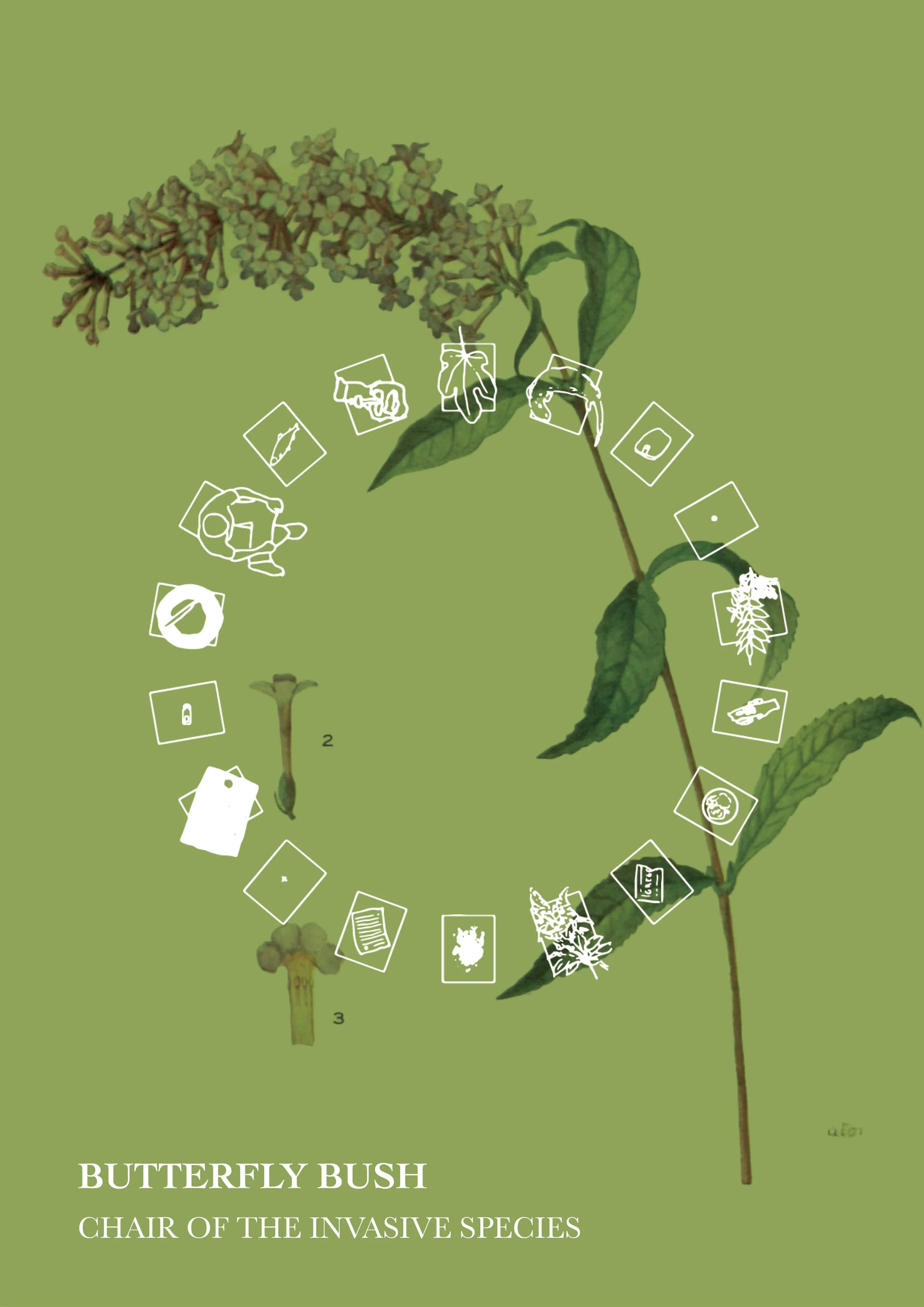Butterfly bush
Chair of invasive species
In the heart of the Industrial Revolution, the sky remained hidden for almost an entire week, masked by the thick clouds of smoke and soot. Trees struggled for sunlight, leaving the environment bleak and grim. With the absence of native greenery, primarily due to the stifling impact of acid rain and a lack of habitat, non-native species found an opening to thrive. Buddleia davidii, also known as Butterfly bush, introduced to Britain in the late 19th century, remained “innocuous” until the late 20th century. Only then did it transition from a garden novelty to a dominant feature on disturbed grounds and masonry. Butterfly bush thrives in anthropomorphic structures recolonizing effectively through wind-spread seeds. It takes up a lot of space from other species, but is excellent for pollinators.
Today, as you walk along the Sheaf, you'll witness a vibrant tapestry of both native and foreign species, ranging from willows and birches to Japanese knotweed. This amalgamation, termed 'recombinant ecology', highlights how urbanisation and globalisation merge native and foreign species, crafting novel ecosystems. Despite the controversy surrounding these newly formed ecologies, it's undeniable that nature has always had its way of adapting and rejuvenating, crafting a silver lining even from the darkest clouds of pollution.
Teollisen vallankumouksen synkimpinä aikoina sankat savu- ja nokipilvet saattoivat peittää taivaan viikkokausiksi. Elonkirjo kärsi valon puutteesta, ilmansaasteista ja happosateista ja lukuisat lajit katosivat jokivarsilta. Syntyperäisen vehreyden uupuessa vieraslajit löysivät paikan kukoistaa. Buddleia davidii, joka tunnetaan myös nimellä Syyssyrikkä, tuotiin Britanniaan 1800-luvun lopulla. Lajin oli tarkoitus harmittomasti kukoistaa vain ihmisen rajaamilla alueilla. 1900-luvun lopulla syyssyrikkä kuitenkin karkasi puutarha-aitauksistaan ja nopeasti siitä tuli Sheffieldin hallitsevimpia lajeja. Karkulaisen voi nähdä kaikkialla, koska tuulen kuljettamana se juurtuu vaivattomasti ihmisen luomiin rakenteisiin. Sopeutuvuutensa ansiosta syyssyrikkä vie paljon tilaa muilta lajeilta, mutta pölyttäjille se on erinomainen kumppanuuslaji.
Sheafin joen pientareiden elämänmuodot ovat kudelma kotoperäisiä kasveja ja uusia tulokkaita pajuista koivuihin ja japanintataariin. Tätä lajien yhteenkietoutumista kutsutaan 'yhdistelmäekologiaksi' – kaupungistuminen ja globalisaatio tuovat kotoperäisiä ja uusia lajeja yhteen luoden uusia ekosysteemejä. Huolimatta näihin uusiin ekologioihin liittyvistä kiistoista on ilmeistä, että elonkirjolla on aina ollut tapansa sopeutua ja uudistua hankalissakin olosuhteissa.
Entanglements to other actors: bricks and rituals, soil, insects.
Seela Pentikäinen
